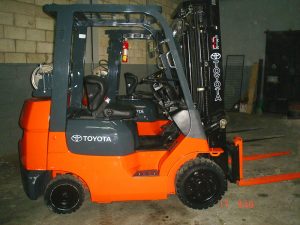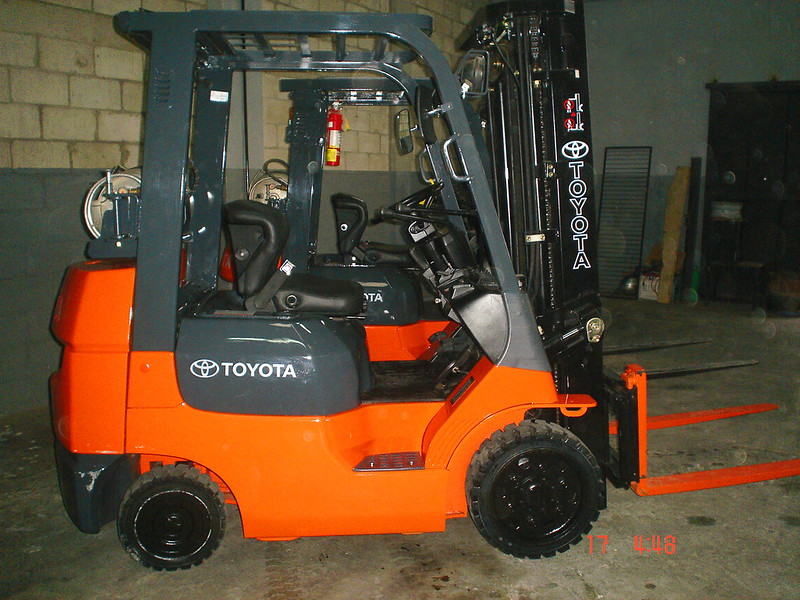What Is A Forklift Free Lift?
Have you ever heard of a forklift free lift? According to Toyotaforklifts.com, there is such a thing.
Toyotaforklifts.com notes that forklift free lift is a measurement that refers to the maximum height that the forks of a lift can be lifted without changing the mast height.
This can occur twice. It occurs when the inner mast rails extend past the out mast rails or when the load backrest or carriage exceeds the height of the outer mast rails.
So what does this mean to a forklift operator? It refers to stacking or unstacking goods in a confined area including a trailer, container, or racking systems. In these applications, the forklift’s forks have height restrictions. There could be a safety hazard in these conditions for products being handled in the forks or for the forklift itself. What can occur could harm the forklift operator or any pedestrians who may be nearby.
Types Of Free Lift A Forklift Can Have

Toyota forklift. (Courtesy: bryan_M007 at flickr.com)
According to Toyotaforklifts.com, there are two types of free lift a forklift can have – limited free lift or full free lift.
When a forklift experiences limited free lift, the inner mast rails of the lift extends either immediately or shortly after lift is requested. Limited free lift occurs with single-stage masts and two-stage masts with no free lift cylinder. The amount of free lift can vary based on the condition and adjustment of the forklift’s lift chains and other factors including fork thickness.
Forklift Fee Lift – Full Free Lift
Full-free lift on a forklift is when the forks can raise without immediately extending the inner mast channels. Full-free lift is available only on masts that have free lift cylinders. A free lift cylinder includes a lift cylinder rod and assembly that lifts the carriage before the rear cylinders are engaged. This permits the carriage and forks to be lifted to a point before the inner mast rails rise. So, on many occasions, you can get several feet of free lift depending on the mast design.
Full-free lift is helpful in areas where you need to lift a load, but have to deal with overhead obstructions. This would be a common occurrence in buildings with low ceilings, in trailers, or in boxcars.
(Source: toyotaforklift.com)

